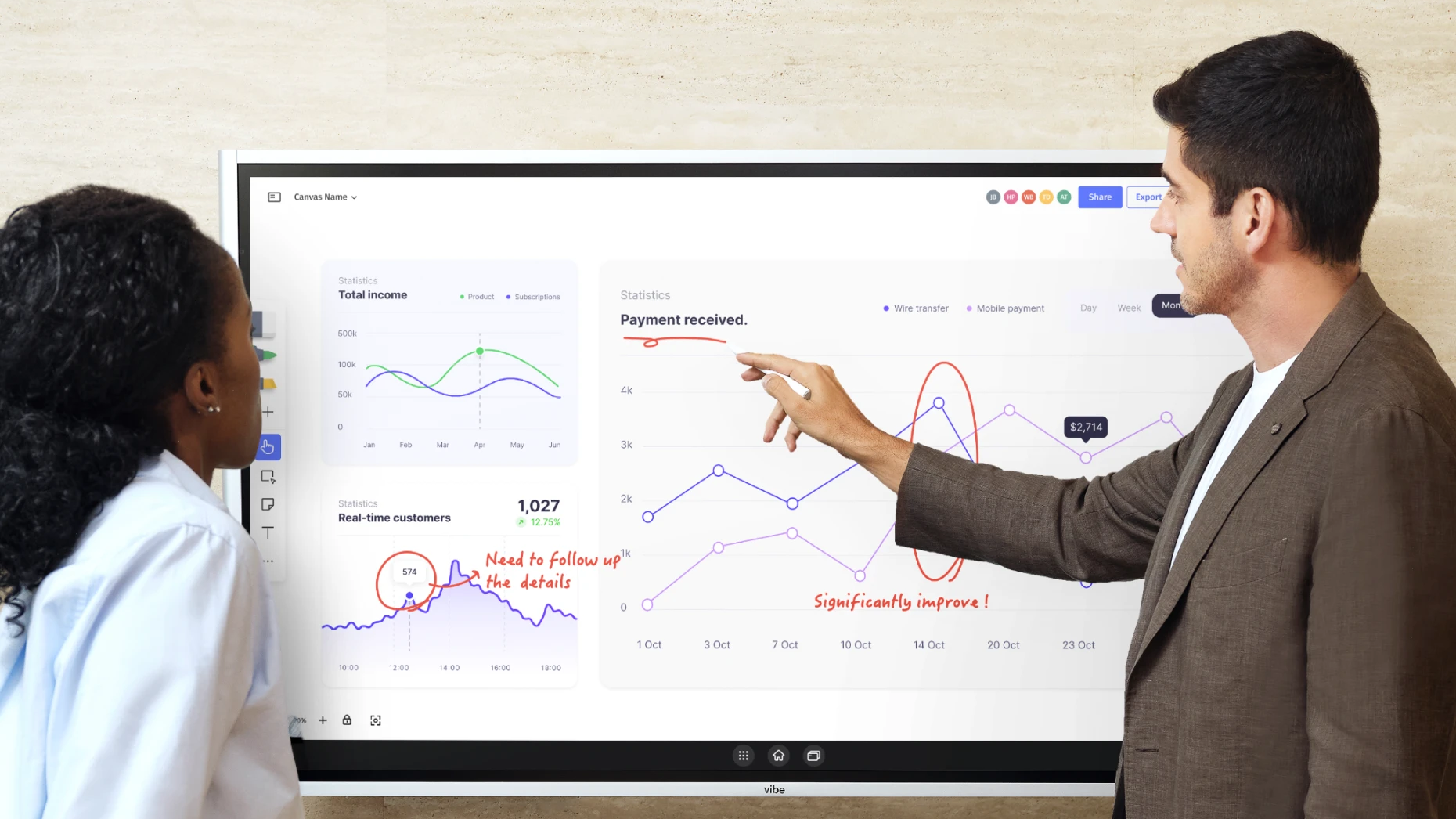Businesses face an increasingly competitive market where standing out requires more than just quality products or services. Real success hinges on building meaningful connections that transform one-time buyers into loyal advocates. The companies that thrive understand this fundamental truth: relationships drive results.
When organizations prioritize genuine connections over simple transactional interactions, they unlock exponential growth potential. These relationships become the foundation for sustainable success, creating a ripple effect that extends beyond individual sales. Smart businesses recognize that investing in these connections yields returns that will compound over time.

What is Client Engagement?
Client engagement is the ongoing cultivation of meaningful relationships between companies and their clients that extend far beyond simple business transactions. This increasingly dynamic process involves creating emotional connections, fostering trust, and delivering consistent personalized value throughout the entire client lifecycle.
Unlike standard customer service, client engagement requires proactive efforts to understand, anticipate, meet, and ultimately exceed client needs and expectations. It encompasses all touchpoints, from initial contact through long-term partnership development. The most successful organizations view this as a strategic imperative rather than a responsibility.
Client Engagement vs Client Experience vs Client Satisfaction
These three concepts often get confused, but each serves a very distinct purpose in business strategy:
Client Satisfaction
Measures how well expectations are met during specific interactions. It’s reactive, focusing on past experiences and immediate responses to products or services.
Client Experience
Encompasses the entire journey a client takes with your organization. This includes every touchpoint, from marketing materials to support interactions. Experience design focuses on optimizing these touchpoints for maximum effectiveness and minimal friction.
Client Engagement
Goes deeper than both satisfaction and experience. It measures the emotional investment and ongoing relationship strength between clients and your organization. Engaged clients actively participate in your brand community, provide feedback, and become advocates. They’re emotionally invested in your success and view the relationship as mutually beneficial.
The Client Engagement Process
Successful client engagement follows a structured approach that builds momentum throughout the relationship lifecycle. Each stage requires specific strategies and careful attention to detail.
-
Research the client forms the foundation of effective engagement. This involves understanding their industry, challenges, goals, and communication preferences. Deep research enables personalized approaches that resonate with specific client needs. The most successful professionals invest significant time in this phase, gathering insights from multiple sources, including social media, company websites, and industry publications.
-
Connect where they are means meeting clients on their preferred platforms and channels. Some clients prefer email communication or in-person meetings, while others respond better to phone calls, video conferencing, or social media interactions. Understanding these preferences and adapting your approach demonstrates respect for their time and communication style.
-
Tailor your presentation involves customizing your message, solutions, and delivery method to match client-specific needs. Generic presentations fail to create the personal connection necessary for strong engagement. Successful professionals craft unique interactive presentations that speak directly to individual client challenges and opportunities creating a valuable conversation.
-
Build a trusting partnership requires consistent follow-through, transparent communication, and genuine interest in client success. Trust develops over time through reliable actions and honest interactions. This stage transforms vendor-client relationships into strategic two-way partnerships where both parties benefit from ongoing collaboration.
-
Measure success involves tracking both quantitative metrics and qualitative feedback to ensure engagement strategies are working effectively to build a healthy relationship. Regular assessment allows for course correction and continuous improvement in relationship management approaches.
The Importance of Good Client Engagement
Clients have more options than ever before, making relationship quality a key differentiator. Companies that fail to engage effectively find themselves competing solely on price, which erodes profitability and creates unsustainable business models. Strong client engagement serves as a catalyst for sustainable business growth. Organizations that excel in this area consistently outperform competitors across multiple metrics like revenue, retention, and market share.
Top Benefits of Client Engagement
Understanding the tangible advantages of strong client engagement helps organizations prioritize relationship-building initiatives and allocate resources effectively. The following benefits demonstrate why leading companies invest heavily in engagement strategies:
Higher Conversion Rates
Properly engaged prospects convert at significantly higher rates than those who receive generic outreach. When potential clients feel understood and valued throughout the sales process, they’re more likely to move forward with purchasing decisions. This happens because engagement builds trust and demonstrates your organization’s commitment to their success. Personalized engagement strategies help prospects visualize how your solutions address their specific challenges. Rather than presenting generic benefits, engaged sales processes focus on interactive client-specific outcomes and value propositions. This targeted approach reduces sales cycle length while increasing close rates.
Revenue Growth Through Strategic Upselling and Cross-selling
Engaged clients are more receptive to additional products and services because they trust your organization’s ability to deliver value, creating natural opportunities to introduce new solutions that address evolving needs. This organic growth approach is more cost-effective than acquiring new clients and enables organizations with strong engagement strategies to consistently achieve higher revenue growth than their competitors. Successful upselling requires a deep understanding of client goals and challenges, which engaged relationships provide, allowing organizations to present solutions that clients view as valuable investments rather than sales pitches. The revenue impact extends beyond direct sales, as engaged clients often provide case studies, participate in marketing initiatives, and serve as references for new prospects, reducing marketing costs while creating revenue stability for strategic planning and business expansion.

Increased Loyalty and Retention
Client engagement directly correlates with retention rates and customer lifetime value. When clients feel valued and understood, they’re less likely to explore alternative solutions. This loyalty provides predictable revenue streams and reduces the costs associated with client acquisition. Loyal clients also demonstrate higher tolerance for occasional service issues or product limitations. They understand that strong relationships involve working through challenges together rather than immediately seeking alternatives. This patience provides organizations with opportunities to address problems and strengthen relationships.
Post-Conversion Advocacy
Satisfied clients become powerful advocates who promote your organization through word-of-mouth marketing and referrals. These recommendations carry significant weight because they come from trusted sources rather than paid advertising. Advocacy-driven growth often produces higher-quality leads with shorter sales cycles.
Engaged clients also participate in marketing activities such as case studies, testimonials, and speaking opportunities. This content provides social proof that influences prospect decision-making while reducing marketing content creation costs.
Valuable Client Insights
Ongoing engagement generates continuous feedback that informs product development, service improvements, and market strategy. Engaged clients willingly share insights about industry trends, competitive activities, and evolving needs. This information provides competitive intelligence that guides strategic decision-making.
Client feedback also helps identify upselling and cross-selling opportunities before competitors recognize them. Early insight into client needs enables proactive solution development and strengthens competitive positioning.
8 Proven Client Engagement Strategies
Implementing effective client engagement requires strategic approaches that combine multiple tactics tailored to your specific audience and industry. The following eight strategies consistently deliver measurable improvements in relationship quality. Each strategy can be implemented independently, but the greatest success comes from integrating multiple approaches into a cohesive engagement framework:
1. Build a Strong Digital Presence
Your digital presence serves as the foundation for client engagement in today’s connected world. Clients research potential partners online before making contact, making your digital footprint crucial for first impressions. A strong digital presence includes professional websites, active social media profiles, and valuable content that demonstrates expertise.
Consistency across all digital platforms reinforces your brand message and builds trust with potential clients. Regular content updates show that your organization is active and engaged with industry trends. This ongoing activity keeps your brand visible when clients are ready to make purchasing decisions.

2. Hyper-Personalize Experiences
Personalization goes beyond using client names in email communications. True personalization involves understanding individual client preferences, communication styles, and business objectives. This deep understanding enables customized experiences that resonate with specific client needs and preferences.
Technology enables personalization at scale through customer relationship management systems and marketing automation platforms. These tools track client interactions and preferences, enabling personalized communication that feels genuine rather than automated.
3. Adopt a Consultative Approach
Consultative selling focuses on understanding client challenges and providing solutions rather than pushing products. This approach positions your organization as a trusted advisor rather than a vendor. Consultative professionals ask thoughtful questions, listen actively, and provide insights that help clients achieve their objectives.
The consultative approach requires deep industry knowledge and genuine interest in client success. Professionals who master this approach build stronger relationships and achieve higher sales success than those who rely on traditional sales techniques.
4. Leverage Existing Relationships
Existing clients provide the best opportunities for engagement and growth. These relationships already have established trust and communication patterns, making them ideal for testing new engagement strategies. Successful organizations systematically nurture existing relationships while using them as foundations for new business development.
Referral programs and client advocacy initiatives leverage existing relationships to generate new opportunities. Satisfied clients willingly introduce your organization to their networks when asked appropriately and provided with the right tools and incentives.

5. Solicit and Act on Regular Feedback
Regular feedback collection demonstrates your organization’s commitment to continuous improvement and client success. Feedback should be collected through multiple channels, including surveys, phone calls, and face-to-face meetings. The key is making feedback collection a routine part of client interactions rather than an annual event.
Acting on feedback is more important than collecting it. Clients need to see that their input influences your organization’s decisions and improvements. Communicating changes made based on client feedback strengthens relationships and encourages continued participation in feedback processes.
6. Start a Loyalty Program
Loyalty programs reward ongoing engagement and provide incentives for continued partnership. Effective programs offer meaningful benefits that align with client values and business objectives. These might include exclusive access to new products, priority support, or special pricing arrangements.
The most successful loyalty programs create emotional connections rather than just transactional benefits. They make clients feel valued and appreciated for their ongoing partnership. This emotional component drives stronger engagement than purely financial incentives.
7. Strengthen Brand Voice
A distinctive brand voice helps your organization stand out in crowded markets while creating emotional connections with clients. Your brand voice should reflect your organization’s values and personality while resonating with your target audience. Consistency in brand voice across all communications reinforces your identity and builds recognition.
Developing a strong brand voice requires understanding your audience’s communication preferences and adapting your style accordingly. The goal is to create authentic connections that feel natural rather than forced or artificial.
8. Use Visual and Interactive Content
Visual and interactive content captures attention more effectively than text-only communications. This includes videos, infographics, interactive presentations, and collaborative tools that engage clients in meaningful ways. Visual content also improves information retention and understanding.
Interactive content creates opportunities for two-way communication and collaboration. Tools like interactive whiteboards enable real-time collaboration that strengthens relationships. This collaborative approach transforms presentations from one-way communications into engaging conversations.
 People use Vibe Board to create visual and attractive content.
People use Vibe Board to create visual and attractive content.Key Metrics for Client Engagement
Measuring client engagement requires tracking both quantitative metrics and qualitative indicators. The most effective measurement systems combine multiple data sources to provide comprehensive views of relationship health and engagement levels.
-
Net Promoter Score (NPS) measures client willingness to recommend your brand to others. This metric provides insight into overall satisfaction and loyalty levels. High NPS scores indicate strong emotional connections and advocacy potential.
-
Customer Satisfaction Score (CSAT) gauges satisfaction with specific interactions or overall experiences. CSAT scores help identify areas for improvement in service delivery and client experience design. Regular CSAT measurement enables proactive problem resolution.
-
Customer Effort Score (CES) assesses how easy it is for clients to resolve issues or get help. Low effort scores indicate efficient processes and effective support systems. High effort scores highlight areas where process improvements could enhance client experience.
-
Churn Rate monitors the percentage of clients lost over specific time periods. Tracking churn rates helps identify patterns and early warning signs of relationship problems. Proactive churn prevention is more cost-effective than client replacement.
-
Behavioral Analytics tracks client actions such as website visits, repeat purchases, and digital engagement. These metrics provide insights into client interests and engagement levels. Behavioral data helps identify opportunities for increased engagement and relationship development.
-
Frequency of Contact measures how often clients interact with your brand across different channels. Regular interaction indicates strong engagement and relationship health. Declining contact frequency may signal relationship problems that require attention.
-
Subscriber and Loyalty Program Numbers indicate engagement through program participation. Growing participation suggests increasing engagement and satisfaction levels. Program metrics also help evaluate the effectiveness of specific engagement initiatives.
-
Online Reviews and Social Engagement provide qualitative and quantitative feedback about client experiences. Reviews offer insights into client perceptions and areas for improvement. Social engagement metrics indicate brand awareness and emotional connection levels.

What Does Successful Client Engagement Look Like?
Successful client engagement manifests clearly through observable behaviors and measurable outcomes that indicate strong relationship health. Rather than maintaining purely transactional relationships, truly engaged clients demonstrate their investment in your organization’s success through consistent actions and advocacy behaviors:
Active Participation in Programs and Communities
Engaged clients actively participate in loyalty programs, feedback sessions, and brand communities, viewing these initiatives as valuable opportunities rather than obligations. They attend webinars, join user groups, and contribute to online forums where they share experiences and insights with other clients. This participation extends beyond passive consumption to active contribution, with engaged clients often becoming community leaders who help onboard new members and share best practices.
These clients also volunteer for beta testing programs and provide input on new product development initiatives. Their willingness to invest time in these activities demonstrates genuine interest in your organization’s evolution and success.
Advocacy Through Referrals and Testimonials
Clients providing referrals, testimonials, and serving as case study participants represent the highest level of engagement and trust. They willingly stake their professional reputation on your organization’s ability to deliver results for others in their network. This advocacy behavior demonstrates emotional investment in your organization’s success and confidence in your ability to replicate positive outcomes.
Engaged advocates often go beyond formal referral programs, proactively introducing your organization to colleagues and industry contacts. They participate in speaking opportunities, co-present at conferences, and allow their success stories to be featured in marketing materials. This level of participation requires deep satisfaction with both outcomes and the relationship experience.
Multi-Channel Interaction Patterns
Frequent, positive interactions across multiple channels indicate strong relationship health and ongoing engagement. These clients maintain active communication through social media, attend events, utilize support resources, and engage with content across various platforms. Their interaction patterns demonstrate genuine interest in staying connected and informed about your organization’s activities and offerings.
Engaged clients also initiate contact rather than only responding to outreach efforts. They share relevant industry news, ask thoughtful questions, and seek advice on challenges beyond your direct service offerings. This proactive communication indicates they view the relationship as a valuable resource for their professional development.

Constructive Feedback and Implementation Recognition
Clients offering constructive feedback and seeing their suggestions implemented experience the collaborative partnership that defines successful engagement. They provide specific, actionable input because they’re invested in mutual success and improvement. These clients understand that feedback is a gift that helps strengthen the relationship and improve outcomes for everyone involved.
When organizations act on client feedback and communicate the changes made, it reinforces the collaborative nature of the partnership. Engaged clients feel heard and valued, which strengthens their emotional connection to the organization and increases their willingness to provide future input.
Financial Commitment and Loyalty Indicators
High retention rates and increased share of wallet from existing clients provide clear financial indicators of successful engagement. Engaged clients consolidate their spending with trusted partners rather than spreading purchases across multiple vendors. They also demonstrate loyalty during challenging periods, working collaboratively to resolve issues rather than immediately seeking alternatives.
This financial commitment extends to premium service levels and additional product purchases. Engaged clients invest in comprehensive solutions because they trust your organization’s ability to deliver value and support their long-term success.
Keep Clients Engaged with the Vibe Board S1
The Vibe Board S1 improves client engagement throughout every stage of the relationship lifecycle, from initial discovery to long-term partnership maintenance. Its 4K UHD touchscreen display and 20-point multi-touch capability create immersive collaborative experiences that help establish trust and demonstrate value from the very first interaction. The smart whiteboard’s ability to transform static presentations into dynamic, interactive sessions makes tasks like discovery calls more engaging and helps uncover client needs more effectively. As relationships develop, the Vibe continues to nurture connections through ongoing collaborative experiences that strengthen communication effectiveness.
Vibe can provide the visual and interactive content strategies that are needed to keep clients engaged over time for successful long-term relationship maintenance. Seamless integration with over 250 professional applications ensures compatibility with existing client workflows, while cloud-based saving functionality enables easy sharing and follow-up after meetings, maintaining momentum between interactions. Remote clients feel both present and engaged during virtual sessions, and by combining multiple collaboration tools into a single platform, the Vibe Board S1 helps organizations implement the consistent, high-quality engagement experiences that drive lasting business relationships and sustainable growth.
Watch this video to see how Vibe Board make clients feel more engaged through visual interactions:








-1sbltxxq4FYxHrXrwJVLsCDNsXpqNa.webp)
-5Zp0pmSytvcuYDVs1LvuwplKuRneK0.webp)
